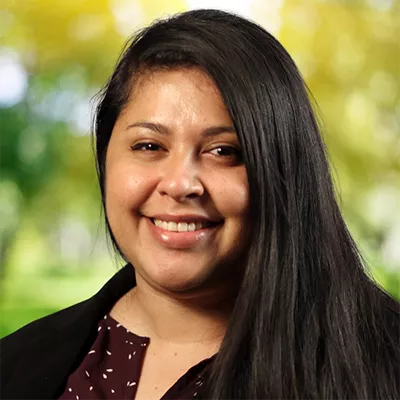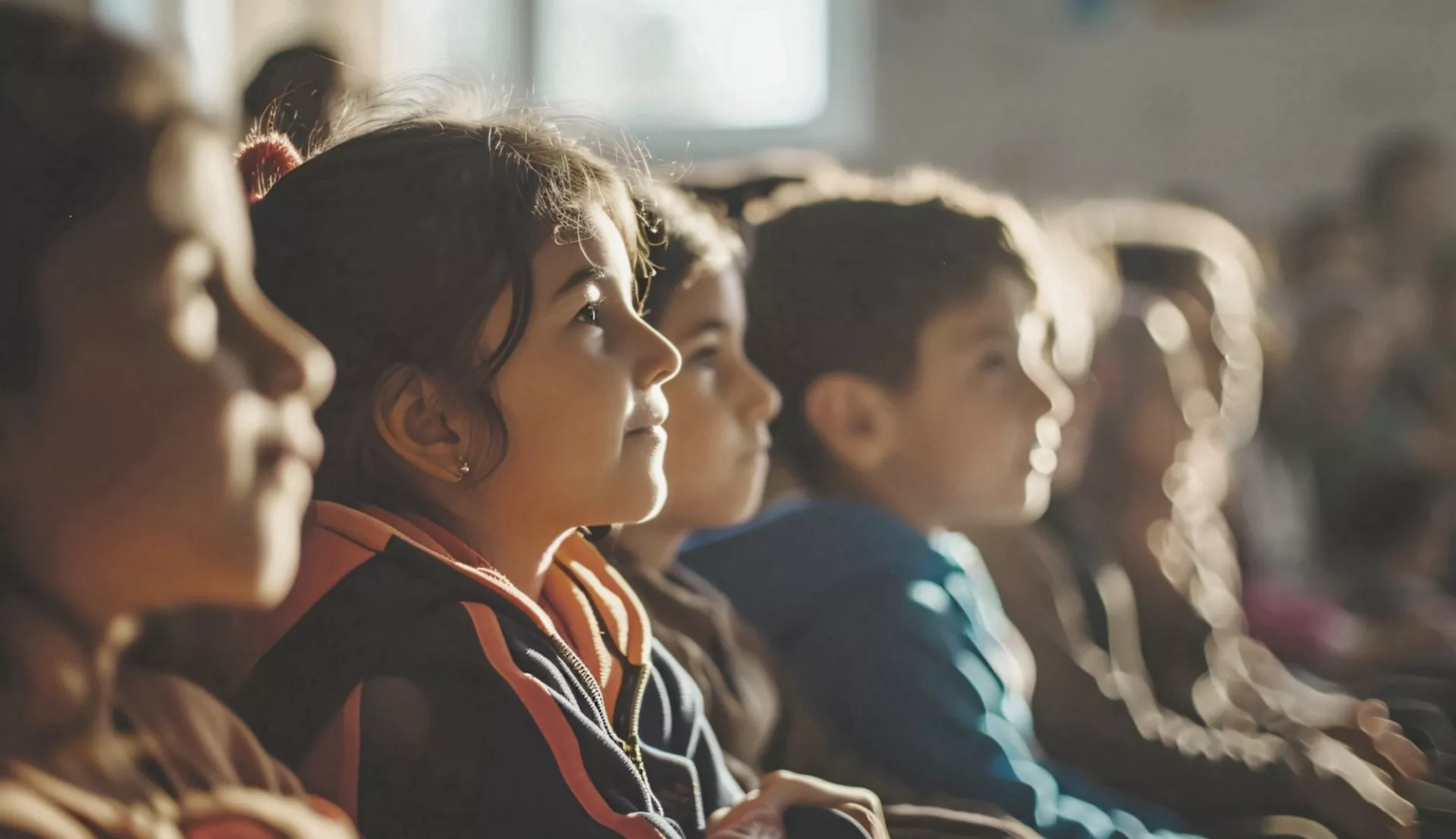Key Takeaways
- Welcoming and inclusive classrooms help all students thrive.
- For students new to the U.S., culturally responsive pedagogy and social-emotional and mental health supports are among best practices to help students and their families thrive in their new community.
- NEA established a platform where educators can share stories that draw attention to the plight of children and young people crossing the southern border—submit today.
The searing stories of immigrants from the Caribbean and Central and South America have captured the attention of educators, especially the stories of children making this oft-perilous trip before quickly moving into our classrooms. Many educators support these newcomers each day, and struggle to help them recover, adjust, and learn.
“Newcomer students come with so many traumas from the negative experiences they lived through in their home countries,” says Denise Sheehan, who advocates for educational opportunities for newcomers and serves as an English language content integration specialist for Las Cruces Public Schools in Las Cruces, N.M. “Then they travel for weeks at a time and come to a new country with a new language and so much uncertainty. They need to feel validated and welcomed.”
To meet those goals and improve the treatment of immigrant children and their education, NEA has curated useful resources and other offerings from collaborating partners to promote educational best practices and make educators even more aware of their plight.
These resources provide strategies to teach and support English language and multilingual learners. In response to member concerns, NEA also provides updates about legislative and political action, promotes a focus on “culturally responsive pedagogy and social-emotional support,” and offers micro-credentials to support cultural competence and other educational resources.
NEA has seven newly revised online blended learning courses focusing on English language and multilingual learners. These courses (among others) can be found within NEA's Teacher Quality Program Guide.
Migrant Children and Families
“There are many gaps in instruction when it comes to supporting our English language learners,” says Sheehan. “There is so much to do.”
She notes, for example, that reading instruction often overlooks emergent bilinguals and leaves English language learners as an afterthought. It focuses on teaching students to read in English only and is therefore “linguistically biased.” Funding is mostly funneled into the science of reading and not programs supporting English language and multilingual learners.

There is also a lack of support and training for language acquisition and best instructional practices along with gaps in meeting the social emotional needs of these students.
“Our school districts need to have supports in place that will provide students and their families with the resources needed to thrive in their new community,” Sheehan says.
She saw how this could work, in August 2023, when a family from Venezuela arrived with no documentation and few belongings. Her district follows the McKinney-Vento Act for homeless students, which allowed the students to be enrolled. Then staff members, who were assigned to a district “international welcome center,” stepped in to help with documentation and other support. She says the fact that the school where they were assigned was a community school was particularly helpful. The community school coordinator played a key role in carefully moving the students into the appropriate classrooms and helping parents with family needs while the students were in class.
“Nearly six months later these little ones have learned so much English and still feel validated in their native language. They are thriving. When we welcome a new family to our district, it is all hands on deck. We wholeheartedly believe that every child has the right to reach their potential.”
NEA has promoted McKinney-Vento and Community Schools as good resources for assisting newcomer students. NEA also offers a host of material online to support English language learners, including this toolkit with links “to help educators connect with, mentor, and inspire these students”.
Sheehan says that on a policy-making level, existing legislation would be more beneficial if it was fully funded and implemented – including the Bilingual Education Act, Title III of the Elementary and Secondary Education Act, and the Every Student Succeeds Act.
NEA’s Legislative Program lists more than a dozen initiatives the union is promoting for English language and multi-lingual learners, ranging from hiring qualified instructors for these students and providing fair assessments and systems for identifying needs, to tackling “discipline policies that disproportionately affect them.”
NEA Effort Help Establish Bilingual Education Act
NEA addressed the issue as far back as 1966 when it held a conference on bilingual education and soon after in a report on the issue that noted that “these are America’s students, and the nation can’t afford to let them down.” The union played a key role in passage of the 1968 Bilingual Education Act and continues to do so today.
Newcomer student population grows
One-out-of-four students in K-12 schools is a migrant, notes Laura DuPre, a recently retired third grade teacher at the Fallbrook Union Elementary School District, in California, and a chair of the NEA Multilingual Learners Caucus. The U.S. Department of Education reports that in the 2021-22 school year there were more than five million students in U.S. schools who were English learners. The pace of migration is not slowing either.
“Migrants and immigrants need authentic, developmentally appropriate academic programs to be successful in our ever-changing global society,” DuPre says. “We believe there should be more attention given to resources that will help schools support the students.”
DuPre and her colleagues encourage districts and schools to promote a U.S. Department of Education Newcomer Toolkit packed with strategies for welcoming newcomers; supporting their social, emotional, and mental health needs; providing instruction and establishing partnerships with families; and helping “elementary and secondary teachers, principals, and other school staff who work directly with immigrant students—including asylees and refugees—and their families.”
“Newcomer students need to be appreciated and respected for what they bring to the table in regard to the culture and linguistic attributes,” DuPre says.
She says the toolkit provides fundamental information that can help educators who often aren’t equipped to support or teach newcomers, who comprise a diverse group of students with a wide variety of backgrounds and abilities and who might speak several languages other than English. Newcomers are thought of as students who have been in the country for three years or less, but DuPre says they often need support well beyond that time frame.
Another helpful resource comes from the National Newcomer Network. The network site notes that while many schools and districts have “taken great care to develop programs that elevate their strengths and aim to address their needs, they are not always evident.”
“Students may enroll in one district and receive a very different educational experience than a newcomer student enrolled in another district. This is an equity issue,” the Network argues. “Together, alongside our students and communities, we imagine a more just educational system for immigrant youth.”
Trauma Informed Pedagogy
NEA offers trauma-informed pedagogy courses that help educators understand how trauma affects both teaching and learning. The courses explore its impact on behavior, support healing, and promote students' ability to self-monitor and stay positively engaged in school.
NEA Micro-credentials are offered at no cost to NEA members.
Sharing Stories of Central American and Caribbean Migrants
Telling the stories of immigrants from Central America and the Caribbean region is important to Mayra Alvarado, a bilingual teacher at Manzanita SEED Elementary School in the Oakland Unified School District.
“Children suffer the most during their long journey northward,” Alvarado says. “They often arrive at shelters malnourished and dehydrated because of a lack of food and clean water. If detained by the U.S. government as they cross the border, some have been separated from their families in detention, and with cartels on the Mexican side of the border, they risk forced recruitment into cartels and gangs.” If they are deported their experience can be even more tragic.
Alvarado, along with many of her peers, wants the experiences of children and families to be known – vivid stories like the ones captured in the Dallas Morning News or at the National Tenement Museum or by UNICEF. NEA has established a site where members can offer details about the experiences of the children and families they are working with.

UNICEF tells the story of Pilar from El Progreso, Honduras, who, at age 15, was told by a classmate that she’d be killed by a gang if she didn’t work as a prostitute. Pilar’s father told UNICEF that girls are often abducted and “adolescents are dying every day” in El Progreso. “You cannot go to the police because they are in the chain of corruption,” he says.
UNICEF also describes the experience of a Honduran mother who made the decision to travel north to the U.S. because of concern for her 16- and-18-year-old daughters.
“Gang violence took the lives of one of her closest friends in 2013 and her older brother in 2015,” UNICEF reported. “Then, … her 18-year-old nephew was killed by gang members after being deported from the United States back to Honduras.”
Alvarado was motivated by her own story and her parents’ journey to the U.S.
“When my father migrated to the U.S. from El Salvador in the ‘80s to flee a civil war, he faced violence and was robbed by cartels in Mexico and was kidnapped. Unfortunately, these issues have gotten worse since then.”
Project Hope notes that the circumstances in countries across Central and South America and the Caribbean have worsened for many people who now face violence, political instability, exacerbated poverty levels due to the pandemic, or extreme weather affecting their living conditions and agriculture, which is often their livelihood.
The route migrants travel through Central America is harrowing, and some of it must be traveled on foot, the organization reports, noting that the immigrants “risk exhaustion, hunger, exposure to diseases, violence from criminal gangs, robbery, and sexual violence. Many of these risks continue upon their arrival to Mexico, including sexual abuse and human trafficking.”
Project Hope has detailed key concerns about the issue, including that the countries of origin are shifting, routes are changing, access to health care is limited, and the risk of violence from cartels continues. It notes that children suffer the most – on the trip and even at the U.S. border where they have been separated from families.
Share a Story
To draw attention to the plight of children and young people crossing the southern border, NEA has established a platform where educators can share the stories from their students and describe how they have adjusted to life in the U.S and in our schools. Fill out the form below to upload a story you believe others should hear.
Educator Trauma Resource List
The complex nature of trauma and trauma responses make it a topic of concern for many educators, because of the lasting impact on mental health and wellness. Adults that have experienced adverse childhood experiences, trauma, and exposure to traumatic events may need individualized and systemic supports. While educators are charged with the care and instruction of students, their own physical and psychological care may go unsupported. Educators may experience trauma that is acute, complex, and/or secondary. This list of resources provides foundational information on the nature of trauma and the types of supports and services educators can access.


